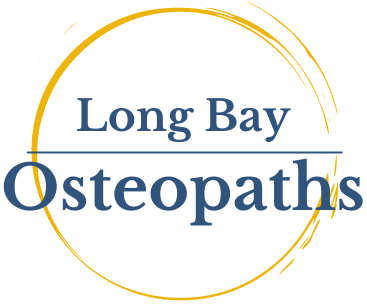Headaches
There are two main types of headaches that we as osteopaths can help with. The most common we see is called cervicogenic headaches, which means headaches being caused by or stemming from dysfunction in the neck (literally translating to ‘of cervical origin’). What this means is that the muscles surrounding the neck are generally tight, and the joints are usually stiff and lack range of movement. So you end up with this pattern of reduced movement of the neck, usually a lot of tension around the shoulders, and then generally a diffuse discomfort around the base of the head or up into the forehead, temporal region. The reason you start to feel it in the head is because when a peripheral nerve (a nerve outside the spine) gets irritated, the brain can’t perceive exactly where that pain signal is coming from, because of the way that nerves converge. It gets a little bit confused by the incoming pain signals and can’t differentiate whether the pain is coming from the head or the neck, so it just tells your body that there is pain in both areas! If you are interested, I will delve into the science behind exactly what is happening in a separate blog post here.
Often these headaches cause a sense of fatigue and general feelings of “meh”, and it’s easy to reach for another coffee or sugar to try to alleviate some of the discomfort, but it just doesn’t really do the trick! In this case, going to see an osteo is usually the first port of call for me, and then once you start the process of loosening everything off and getting the neck moving better, here are some exercises and stretches that can help to support the treatment..
The other type of headache we often see are migraines, which are a little bit trickier to navigate. The origins of migraines are thought to be neurovascular in nature, which simply means that the pain is stemming from the nerves and the blood vessels within the brain. And while that explains why you’re getting the pain, it doesn’t explain what’s causing it. There are a number of ‘triggering’ factors, and they are individual to each person, so it’s a bit of trial and error as to what your own triggers are, and avoiding or managing those triggers as best as you can. So, what does that mean from an osteopathic perspective? Well, while I can’t directly treat inside your head and fix the actual brain, a lot of people find that maintaining good neck range of movement can help to lessen the intensity or frequency of the migraines.
So, for both types of headaches, as osteopaths we work predominantly on the neck and the shoulders to alleviate tension which can help to resolve the pain in the head. I also recently did a course on treatment of the jaw and sinus, and have had really good results with working on those areas in regards to headaches.

